Modern Kitchen Design: Your Comprehensive Guide to Creating the Perfect Cooking Space
Table of Contents
Modern kitchen design has revolutionized how we view the heart of our homes, transforming cooking spaces into sophisticated and functional environments that seamlessly blend style and functionality. Today’s kitchens are multi-purpose hubs where families gather, entertain guests, and create memorable meals.
The evolution of kitchen design reflects our changing lifestyles, with modern homeowners seeking spaces that maximize efficiency while maintaining aesthetic appeal. Whether you’re planning a complete renovation or considering strategic updates, understanding the principles of modern kitchen design will help you create a space that perfectly balances form and function.
Understanding Popular Kitchen Designs: Finding the Perfect Fit
The Corridor Kitchen: Making the Most of Tight Spaces
The corridor layout remains one of the most efficient layouts for modern kitchen spaces, especially in urban homes where square footage is at a premium. This linear arrangement places cabinets and appliances along two parallel walls, enabling a seamless workflow that minimizes steps between main work areas.
To maximize space, maintain a minimum of 42 inches between opposing countertops. This ensures comfortable movement with cabinet doors and appliances opening freely. Consider installing pull-out drawers in lower cabinets to increase accessibility in this streamlined layout.
L-Shaped Kitchens: Versatility with Efficiency
L-shaped designs offer exceptional flexibility for modern kitchen design, making them ideal for open-plan living. This layout naturally creates distinct areas for cooking, cleaning, and food preparation while leaving room for a dining area or kitchen island.
The corner area in L-shaped kitchens offers unique storage opportunities. Install side shelves or corner pull-out systems to make these spaces highly functional rather than empty storage areas. This approach optimizes every square inch while maintaining the clean, uncluttered aesthetic that characterizes contemporary design.
Kitchen Islands: The Modern Centerpiece
Kitchen islands have become synonymous with modern kitchen design, serving as both a functional workspace and a social gathering point. When designing a kitchen island, ensure there is at least 36 inches of clearance on all sides for easy navigation, with 42 to 48 inches ideal for high-traffic areas.
Consider incorporating different levels into your island design—a lower section for food prep and a bar for casual dining. This adds aesthetic appeal while defining separate functional areas within your modern kitchen space.
Smart Storage Solutions: Organizing Your Modern Kitchen
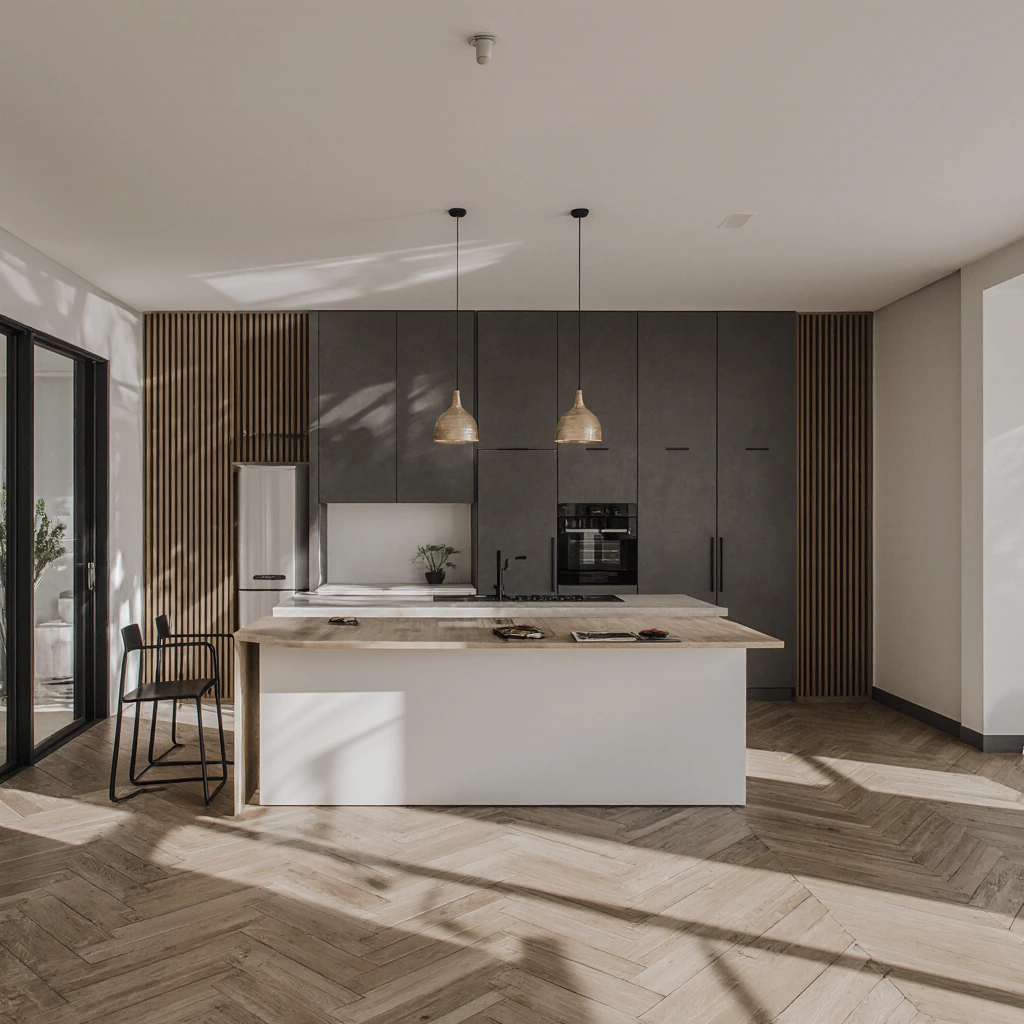
Maximizing Vertical Storage
Modern kitchen design emphasizes clean lines and uncluttered surfaces, making smart storage solutions essential. Take advantage of vertical space by installing cabinets that extend to the ceiling, providing additional storage space while drawing the eye upward to make rooms appear larger.
Pull-out storage systems and tall, narrow cabinets can transform awkward spaces into highly functional storage areas. These solutions make frequently used items easily accessible while maintaining the streamlined look that characterizes modern kitchen design.
Drawer Organization Systems
Replace traditional lower cabinets with deep drawers equipped with custom organizers. This approach allows you to see and access items more easily while maximizing storage capacity. Use drawer dividers for utensils, spice racks, and cutting boards to maintain organization.
Consider installing soft-closing mechanisms on all drawers and cabinet doors. This feature not only prolongs the life of your cabinets but also contributes to the calm and sophisticated atmosphere characteristic of modern kitchen environments.
Hidden Storage Solutions
Incorporate hidden storage elements that maintain the aesthetic of your clean kitchen while providing practical functionality. Install pull-out trash and recycling bins, shelves for small electronics, and hidden spice storage units within existing cabinets.
Simplistically designed drawers provide additional storage space for rarely used items like baking trays and serving platters. These clever solutions prove that modern kitchen design can be both beautiful and highly functional.
Color Schemes and Backsplash Ideas: Creating Visual Impact
Neutral Foundations with Bold Touches
Modern kitchen design typically begins with a neutral color palette, which creates timeless appeal and flexibility for future updates. White, gray, and beige remain popular choices for cabinets and countertops, creating a sophisticated foundation that will stand the test of time.
Add a distinctive personal touch with carefully selected accent colors in backsplashes, hardware, or decorative elements. Deep blues, forest greens, or warm terracotta shades can create a distinctive style while maintaining the sophisticated aesthetic of contemporary spaces.
Backsplash Trends That Defining Modern Style
Subway tiles still dominate contemporary kitchen designs, but modern applications feature larger sizes, unique installation patterns, and unexpected colors. Consider installing subway tiles in a herringbone or vertical pattern for a distinctive visual appeal.
Natural stone backsplashes, especially marble and quartzite, add a natural beauty to contemporary kitchens while offering practical benefits. These materials feature unique veining patterns that create focal points without overpowering the sleek lines of the space.
Mix Textures for Visual Depth
Successful contemporary kitchen designs incorporate multiple textures to maintain the appearance of busy spaces. Combine smooth quartz countertops with raw wood elements, or coordinate sleek stainless steel appliances with warm copper accents.
Matte finishes are growing in popularity in contemporary design, offering a sophisticated alternative to traditional glossy surfaces. Consider using light fixtures, cabinetry, or even appliances in matte black to create striking contrasts within your color scheme.
Strategic Lighting: Lighting Your Modern Kitchen
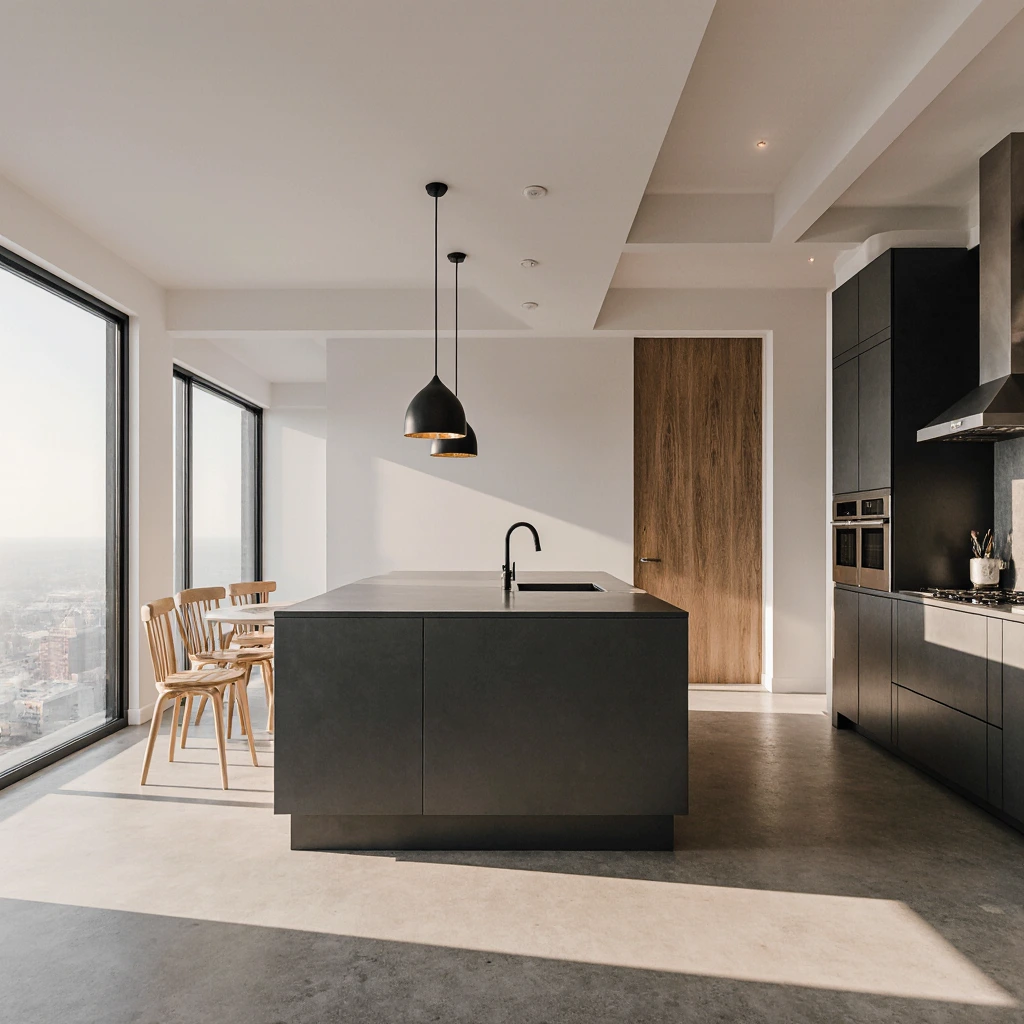
Layered Lighting Styles
Modern kitchen design requires multiple light sources to accommodate various activities and create a distinct atmosphere. Implement a three-tiered lighting strategy: ambient lighting for overall illumination, dedicated lighting for work areas, and accent lighting for accent lighting.
LED strips under cabinets provide essential task lighting while casting a warm glow that enhances the kitchen’s atmosphere at night. Choose warm white (2700-3000K) LEDs for a cozy feel, or cool white (4000-5000K) for a crisp, invigorating light.
Signature Pendant Lighting
Pendant lighting serves as both functional task lighting and a decorative element in modern kitchen design. Install pendant lights over islands or dining tables, ensuring they are suspended 76-91 cm above the surface for optimal illumination without obstructing the view.
Consider using oversized pendant lights or linear lighting to create a distinctive aesthetic. These distinctive pieces add a pop of color, texture, or geometric shape, while providing focused illumination for food preparation and dining areas.
Enhancing Natural Light
Maximize natural light by carefully positioning windows and window treatments. Consider installing larger windows or adding skylights during renovations to flood your modern kitchen with natural light.
Choose window treatments that provide privacy while allowing maximum light penetration. Motorized blinds or shades provide comfort while maintaining the clean, uncluttered look of modern design.
Affordable Modern Kitchen Updates
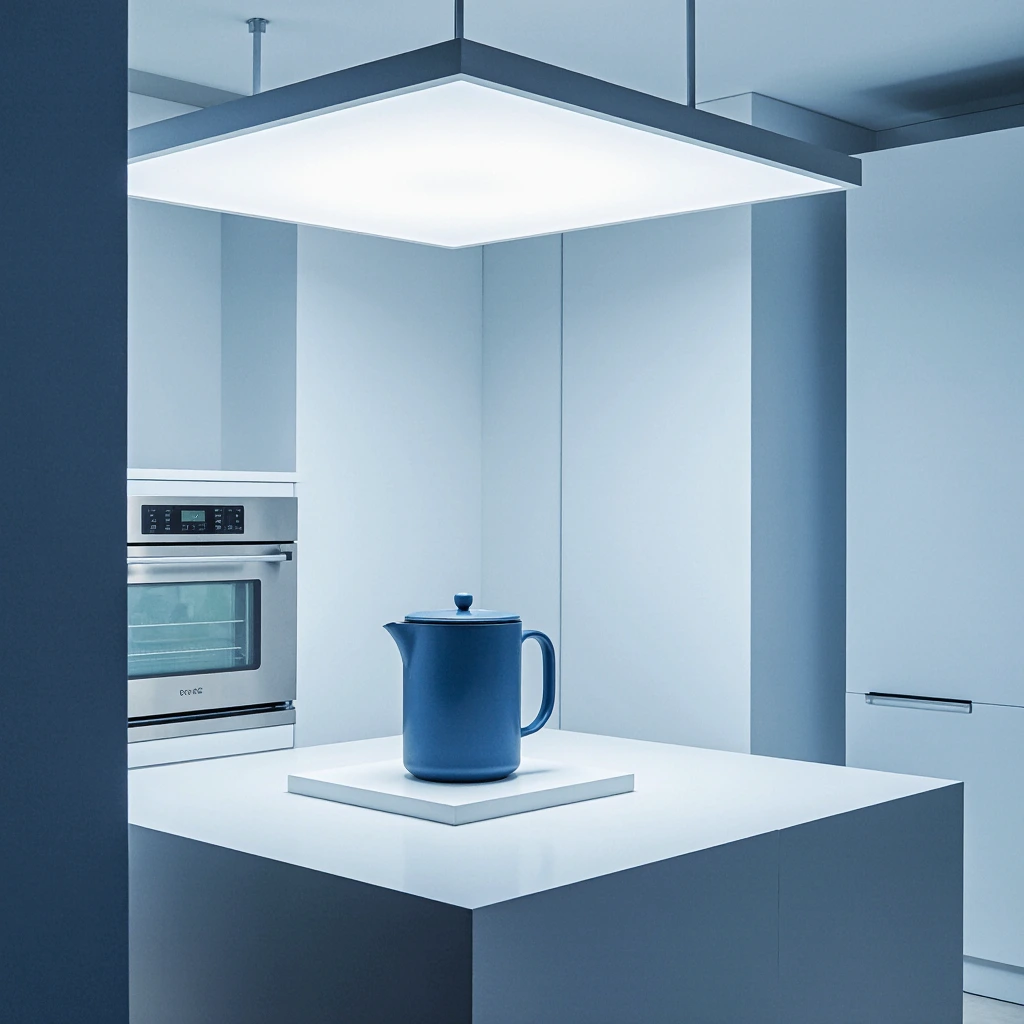
Cabinet Makeovers
Give your kitchen a modern look without a complete replacement by updating existing cabinets. Paint cabinets in contemporary colors, replace metal hardware with sleek, contemporary options, or remove upper cabinet doors to create open display shelving.
Consider replacing only the upper cabinets with open shelving, while renovating the lower cabinets with new doors and kitchen appliances. This approach significantly reduces costs and creates a sense of spaciousness and openness, characteristic of modern design.
Countertop Alternatives
While natural stone countertops are desirable, modern kitchen design can be achieved with economical alternatives. Quartz composites offer durability and consistent patterns at a lower cost than natural stone.
Butcher block countertops provide warmth and texture while keeping a budget in mind. When properly sealed and maintained, wood surfaces can last for decades, while contributing organic elements that balance sleek, modern design lines.
Appliance Updates
Focus on updating the most visible appliances first, especially the refrigerator and stove, as they have a significant impact on the overall look of your kitchen. Stainless steel is still popular, but black stainless steel and matte black finishes offer modern alternatives.
Consider purchasing appliances gradually, starting with the essential pieces. This approach allows you to invest in high-quality pieces while spreading the costs over the long term.
Common Mistakes in Modern Kitchen Design to Avoid
Prioritizing Style Over Function
Although modern kitchen design focuses on visual appeal, function should remain paramount. Avoid choosing materials or designs based solely on appearance without considering daily use and maintenance requirements.
Ensure there is adequate storage space, appropriate work triangle dimensions, and sufficient electrical outlets for modern appliances. Beautiful kitchens that don’t function efficiently quickly become a source of frustration rather than joy.
Inadequate Lighting Planning
Poor lighting planning can undermine even the best-designed modern kitchens. Avoid relying solely on overhead lighting fixtures, which create harsh shadows and insufficient light for food preparation.
Plan lighting during the design phase, considering both natural and artificial sources. Add dimmer switches to adjust light levels throughout the day and create a suitable atmosphere for various activities.
Ignoring Storage Needs
Modern kitchen designs’ focus on clean lines can lead to inadequate storage planning. Avoid sacrificing practicality for aesthetics by carefully calculating storage requirements before finalizing your design.
Consider your cooking habits, the size of your family, and how often you host guests when planning storage solutions. Hidden storage options allow you to maintain an organized appearance while ensuring everything has its place.
Opt for Modern Elements Over Classic Design
While it’s tempting to incorporate all current trends, successful modern kitchen design balances contemporary elements with classic features. Avoid making permanent changes based on passing trends.
Invest in classic, high-quality elements for key components like cabinetry and countertops, then add modern elements through easily changeable accessories, kitchen appliances, or paint colors.
Design Your Modern Dream Kitchen
Modern kitchen design continues to evolve, reflecting our changing lifestyles and technological advancements. By focusing on functionality, incorporating smart storage solutions, and balancing modern aesthetics with practical considerations, you can create a kitchen that meets your family’s needs while maintaining its appeal for years to come.
Remember, the best modern kitchen design is one that reflects your personal style and aligns with your daily routine. Whether you prefer minimalist Scandinavian influences or bold contemporary designs, the principles outlined in this guide will help you create a space that feels like home.
We’d love to hear about your modern kitchen design journey! Share your renovation experiences, favorite design elements, or questions in the comments below. Your ideas may inspire other readers embarking on their own kitchen transformations.
Best Amazon Picks :
FAQs
Q: What is the most important element to consider when planning a modern kitchen design?
A: Functionality should be your primary consideration. While aesthetics are important, a modern kitchen that doesn’t meet your daily cooking and storage needs quickly becomes frustrating. Start by analyzing your current kitchen usage patterns and plan your design accordingly.
Q: How can I make a small kitchen look more modern and spacious?
A: Use light colors, add reflective surfaces, expand vertical storage, and consider open shelving to create a visually open space. Good lighting and reduced clutter are also essential to making small spaces feel larger and more modern.
Q: Are white kitchens still considered modern?
A: Yes, white kitchens are still a cornerstone of modern design due to their timeless appeal and versatility. However, contemporary white kitchens often incorporate diverse materials, mixed textures, and subtle color accents to maintain a traditional look.
Q: What is the average cost to remodel a modern kitchen?
A: Costs vary greatly depending on size, materials, and location, but expect to invest between $15,000 and $50,000 for a mid-range modern kitchen renovation. Luxury renovations can cost over $75,000, while budget-friendly updates can range from $8,000 to $15,000.
Q: How do I choose between different countertop materials for my modern kitchen?
A: Consider your cooking habits, maintenance preferences, and budget. Quartz offers durability and consistency, granite adds natural beauty with unique textures, and butcher block adds warmth. Each material has its own advantages depending on your specific needs.
Q: Should I hire a professional designer for my modern kitchen project?
A: While not always necessary, professional designers can help refine designs, avoid costly mistakes, and make complex decisions. Consider hiring a designer if you’re planning major structural changes, working on a complex design, or feeling overwhelmed by the decision-making process. Q: How long does a modern kitchen renovation typically take?
A: Most kitchen renovations take 6 to 12 weeks, depending on the scope of the work. Simple updates, such as painting cabinets and replacing countertops, may take 2 to 4 weeks, while full renovations that include structural changes can take 3 to 4 months.
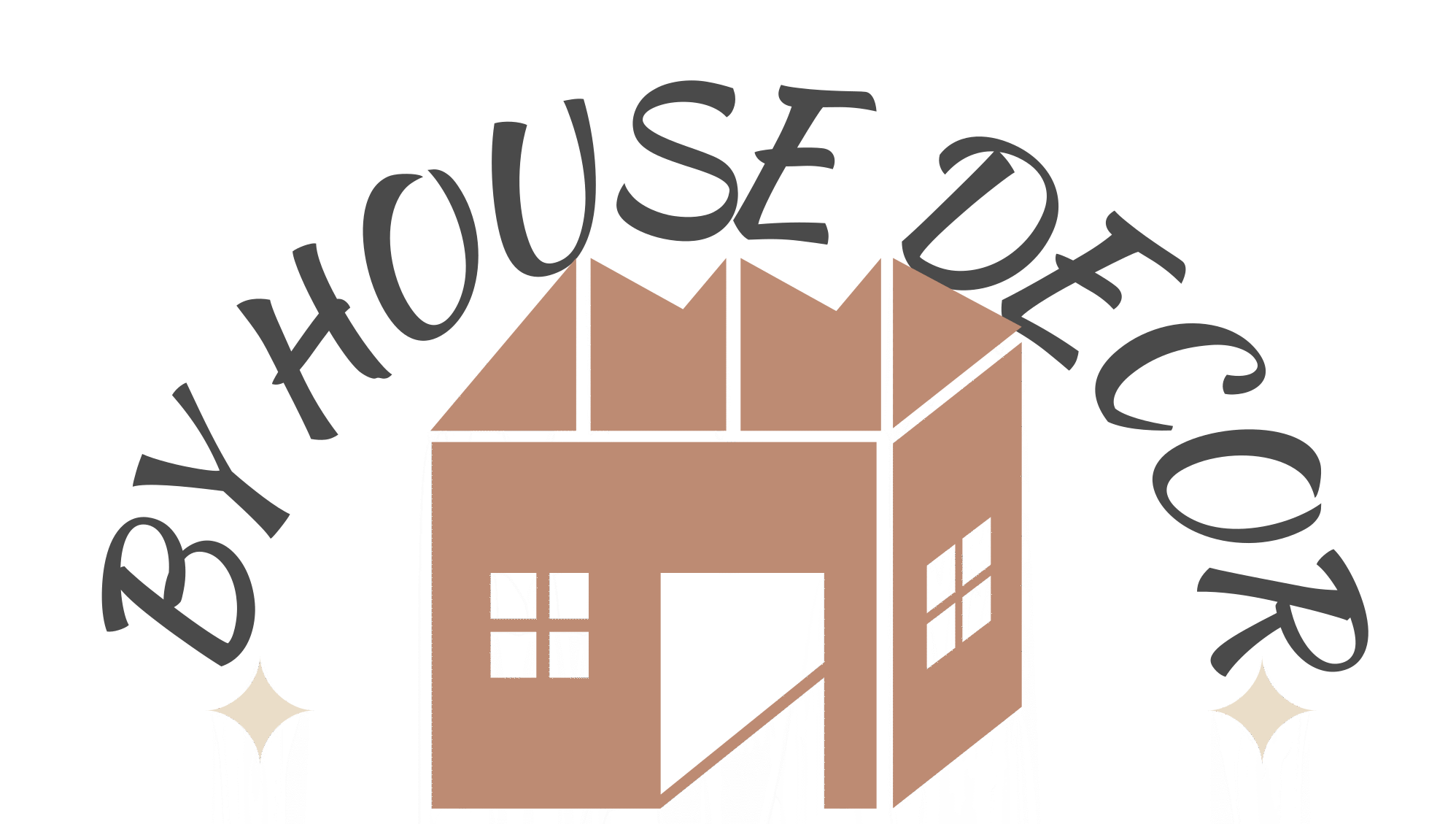
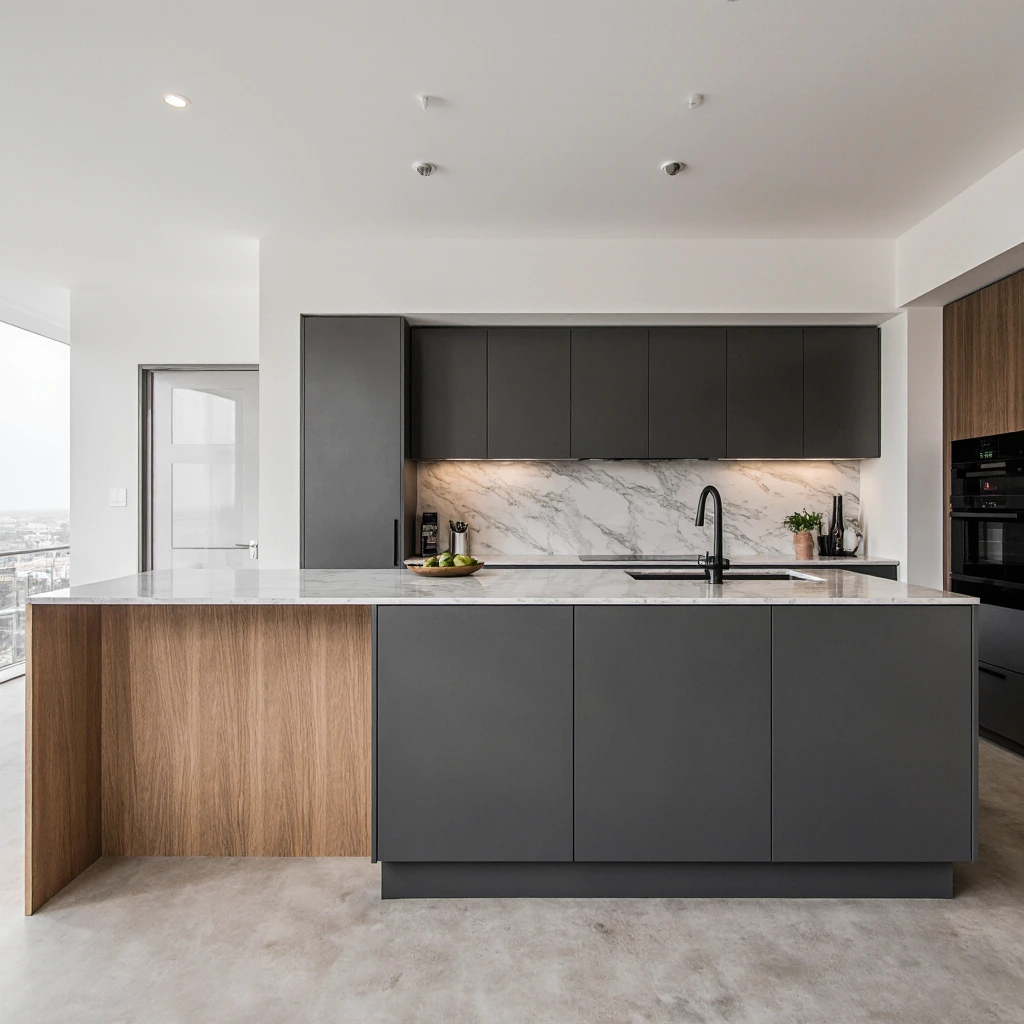
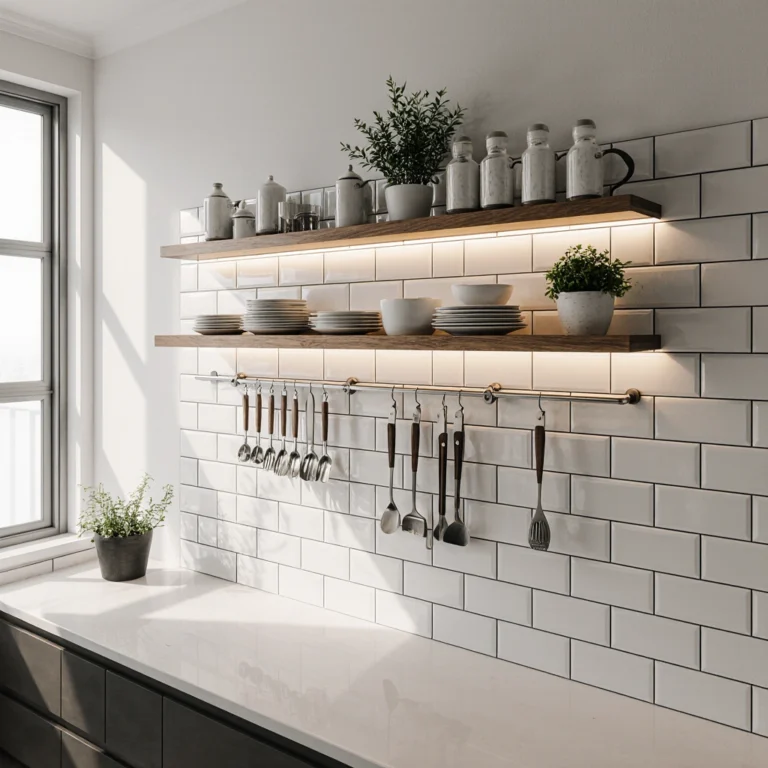
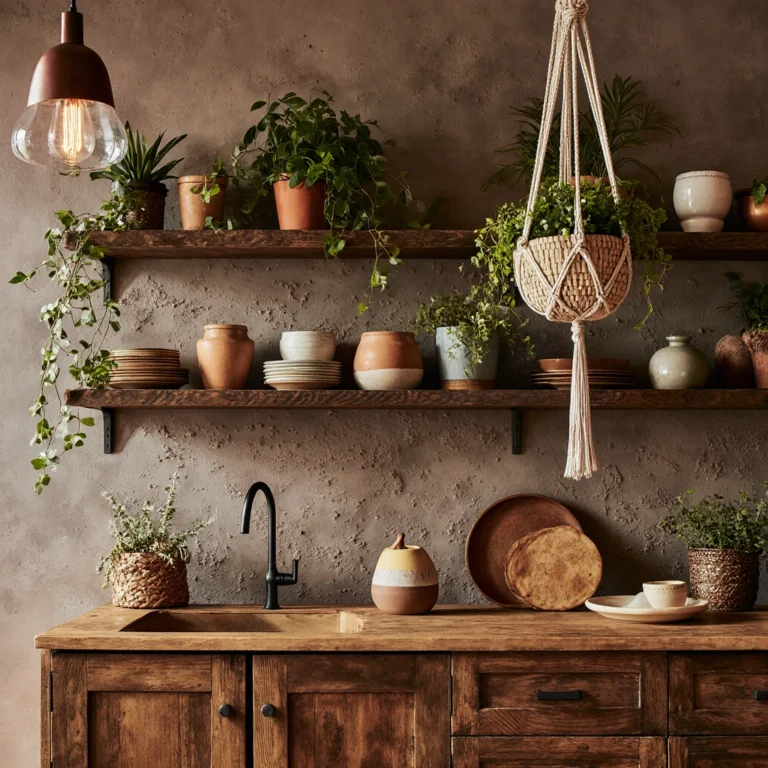
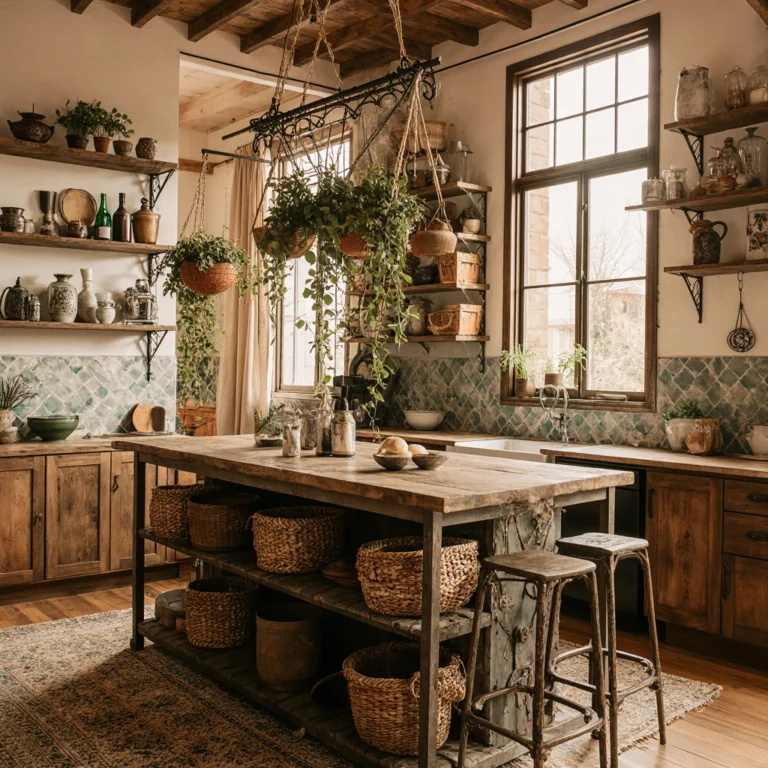
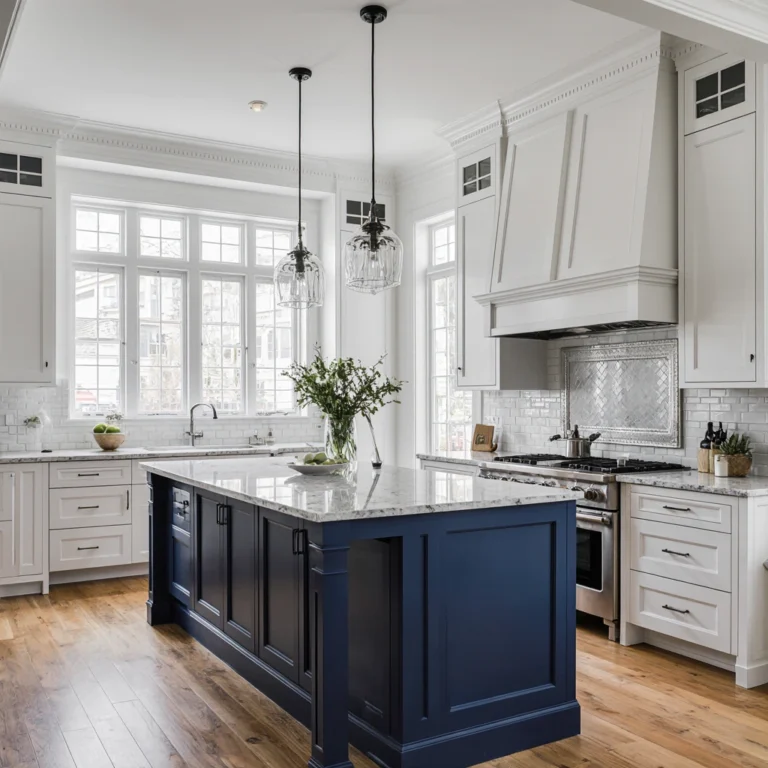
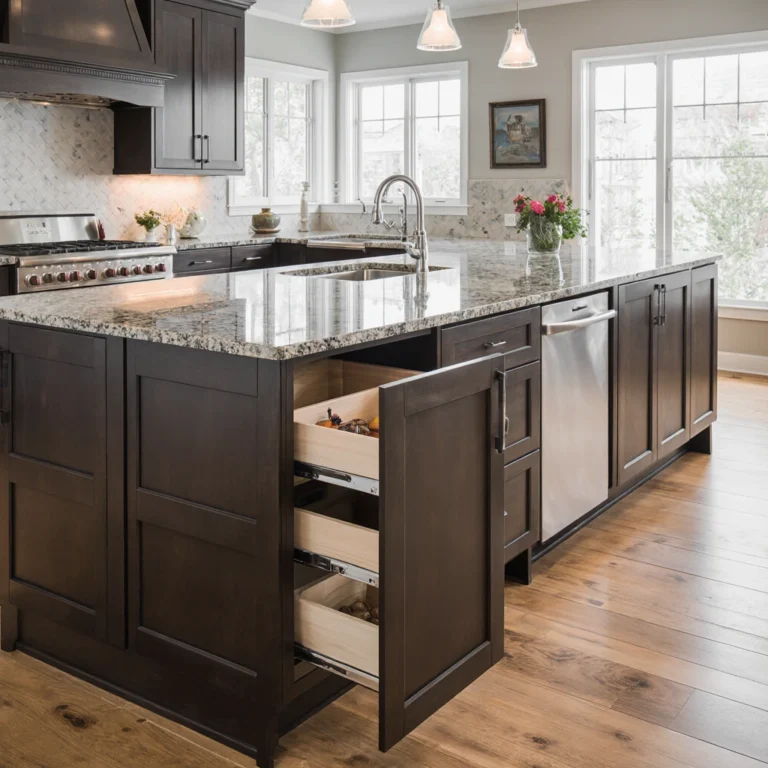
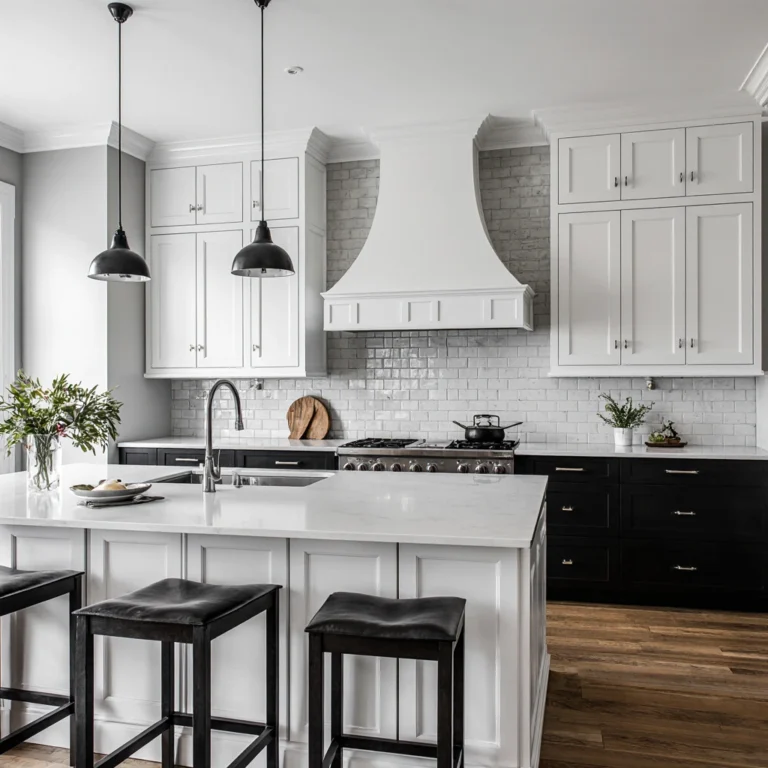
One Comment
Comments are closed.